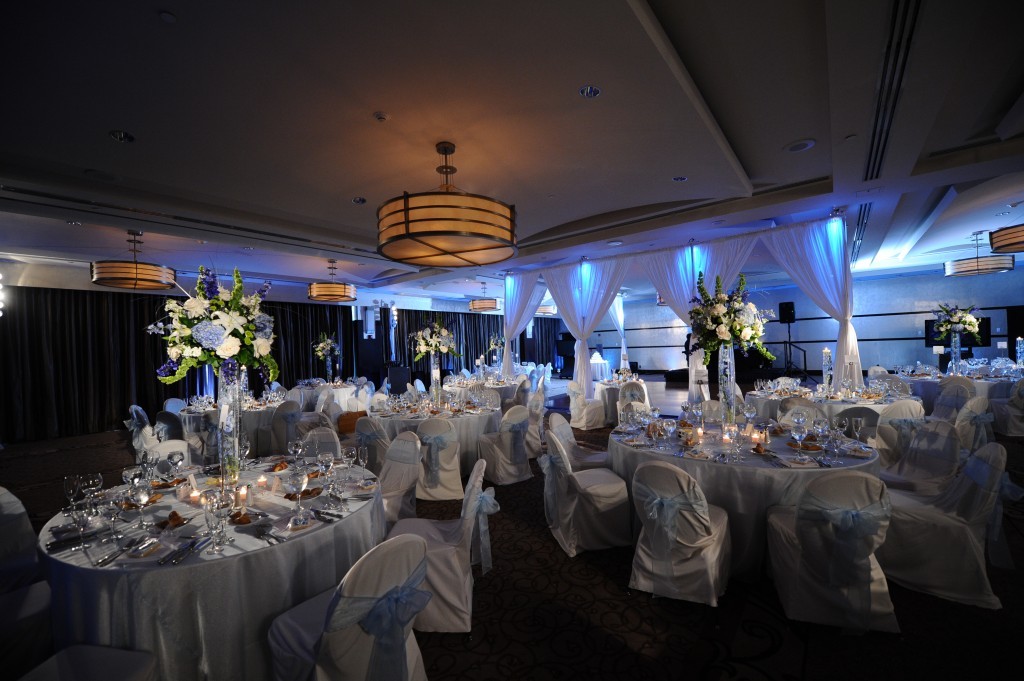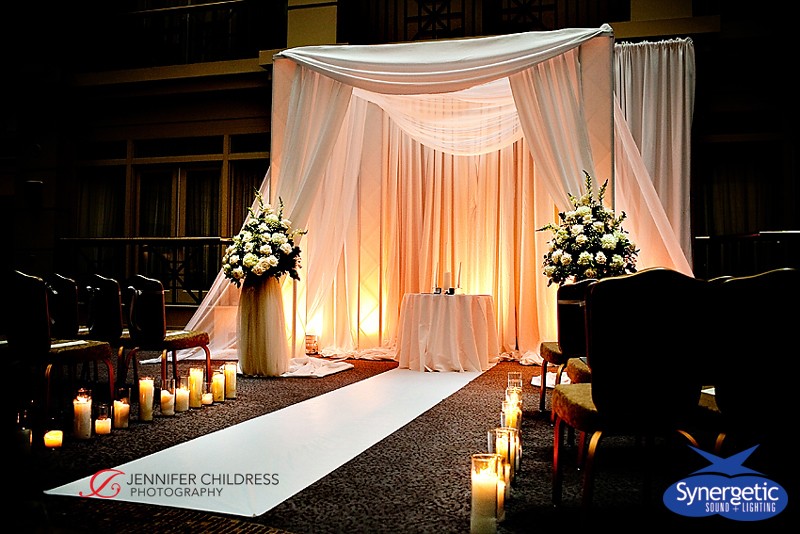By: President & CEO Jason Weldon
We get a lot of calls from clients wanting to know about all of our different draping options. From a simple backdrop for a ceremony or gala, to a complete transformation of a room or tent, here are a few things that you need to know about draping and how it works:
First off, draping takes time. Lots of time. In some cases, we need to have entry to the venue or tent the day before the event. It really depends on how much drape you want set up. Even for the smallest amount of drape, you will need a few hours. The drape may go up rather quickly, but getting it set and dressed can take quite a while.

Photo by: Clair Pruett Photography
Drape is usually a standard height, so most venues can be handled easily. A key factor of drape is making sure that it is flame treated so that it will not catch on fire. This is a big factor, especially in tents. The last thing you want is all the drape catching on fire! Drape is generally priced a running foot. So it will depend on how long of an area you want to cover to get a price. But as with anything in production, a site survey will have to be performed first to review all the details of the space needing drape.
Drape can come in all different colors and all different materials. The most popular colors are white, ivory, black, and presidential blue. Depending on the material, the price will be different. A thicker velour drape will be more expensive than something thinner and more sheer. To give you an idea of something less expensive, think about the type of drape you see at tradeshows. It is very thin and flimsy, and not good for special events. Velour would be the heaviest and highest quality, but also the most expensive. For most events, a fabric that is in the middle is best.
Draping can be very labor intensive, which means there will usually be a lot of people on-site to set it up and take it down. To try and cut down on the cleaning cost, companies try and fold the drape as soon as the event is over, so leaving some time for us after the event is key too. In some cases, companies may just come back the next day so you don’t take up the time at the venue.

Drape can be really tricky to get to look just right. It takes a lot of time and patience, as well as creative pinning to get around the tricky areas. When the drape is finally at the right height, the real work comes in. Dressing it to look like one long piece of consistent drape is a skill and usually takes a few people to speed the process up. Draping is usually done in a tent to hide the ceiling. This is commonly referred to as “tent lining”.
Draping is really up to the creator. There are so many things that you can do with it, you just have to use your imagination and have a budget! Draping isn’t always a cheap option, but when done right, it looks incredible.

 September 22, 2016
September 22, 2016  Synergetic
Synergetic  Lighting
Lighting  September 30, 2025
September 30, 2025  Synergetic
Synergetic  About Us
About Us